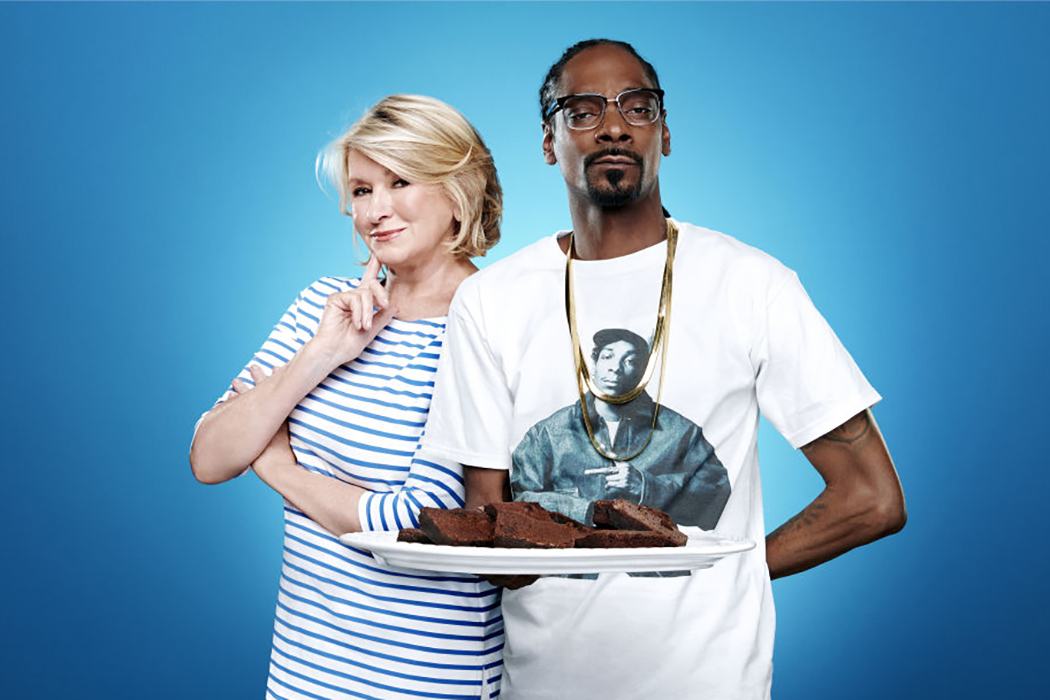Martha Stewart has a new show with Snoop Dogg, premiering November 7 on VH1. Part of the appeal of the odd-couple pair is hearing a hip-hop star’s catchphrases coming from the mouth of an icon who is so prim, so clean-cut, and—crucially—so white.
In an article published in 2001—before Stewart’s public persona was complicated by her trial and imprisonment as a white-collar criminal—Amy Bentley argues that the Martha Stewart brand is built on a very specific kind of whiteness.
“Martha Stewart food is whiteness with a high-church, White Anglo-Saxon Protestant (WASP) gloss,” Bently writes. “Photographs and recipes of the lobster boils, the summer salads, and the hearty root vegetable purees of autumn are carefully constructed, controlled at every level, leaving nothing to chance.”
Unlike other comparable magazines, Bently writes, Martha Stewart Living rarely features “ethnic fare.” And when it does, the context is distinctly white and WASPy. One spread on an Indian dinner focused not on the nation’s food cultures, but on an Indian deputy editor of the magazine introducing her white husband and friends to India flavors. This culminates, Bently writes, with “a lovely Indian dinner in the East Hamptons, Martha Stewart style.”
Bently contrasts Stewart’s style of whiteness with the one found in Matthew Earnest Mickler’s White Trash Cooking series. That working-class, Southern-tinged white food evokes a marginalized culture, “whiteness as ethnicity.” Stewart’s upper-class New England style, on the other hand is “whiteness as achieved cultivation.” It’s something that demands knowledge of the correct way to serve a winter crudité salad, as well as the dedication and leisure time to make complex, attractive meals from scratch.
Bently quotes one writer describing Stewart as a “Puritan who prepared sinful foods… that are redeemed by the prodigious labors, the molasses afternoons, involved in serving them.”
The essential idea of Stewart’s brand, with linens and garden accessories available at Kmart, is to make this upper-class, white, “correct” food aesthetic available to all. And, indeed, Bently finds that her appeal “transcends class, and even gender and race to some extent.”
As we approach a moment when white people will be a minority in the United States, a key question is whether whiteness is receding as a default assumption in our popular culture. Whiteness may be increasingly seen as one specific ethnicity among many, while it becomes more difficult to present the style of upper-class WASPs as an obvious goal to which one should aspire. If so, a show that gives Martha Stewart equal billing with a black costar might just be a sign of the times.







